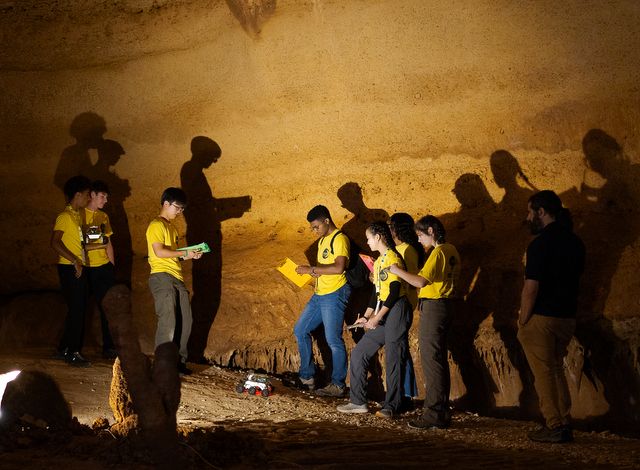
To plan future habitats on the moon, San Antonio students go beneath the earth's surface
In late March, more than two dozen students from schools across the San Antonio region and the robot rovers they built earlier this year descended underground into a cave system to map out its terrain and study its sediment.
Their field work and findings deep inside Cave Without a Name a few miles from Boerne, Texas, will contribute to ongoing efforts by NASA to develop technologies and advance research for future lunar habitation.
Scientists have long considered the moon’s lava tube caves as the most ideal lunar habitat for humans, as they would provide protection from high radiation levels as well as hazards like micro-meteorites. Luckily for researchers like the LCATS students, local cave environments offer a remarkably similar environment to lunar lava tubes (not including the lack of atmosphere, of course!)
The recent outing is part of the Lunar Caves Analog Test Sites (LCATS) program, developed by the space-focused educational nonprofit WEX Foundation and, for the current and upcoming school year, fully funded thanks to a $315,000 gift from the Port San Antonio-affiliated Kelly Heritage Foundation.
As part of the cave trip and other experiences during the three-year enrichment program, students sharpen their skills — in critical thinking, problem solving, teamwork and technology development — while at the same time they are exposed to the growing array of exciting career opportunities related to space exploration.
“I love it because everyone here is really interested in stuff to do with space, physics, engineering,” Nirmel Kozak, a freshman at STEM Academy at Lee High School, told a local television reporter who joined in the cave outing. “All of these people really care about it, and they find it really interesting, so they all want to be here, which is really nice.”



